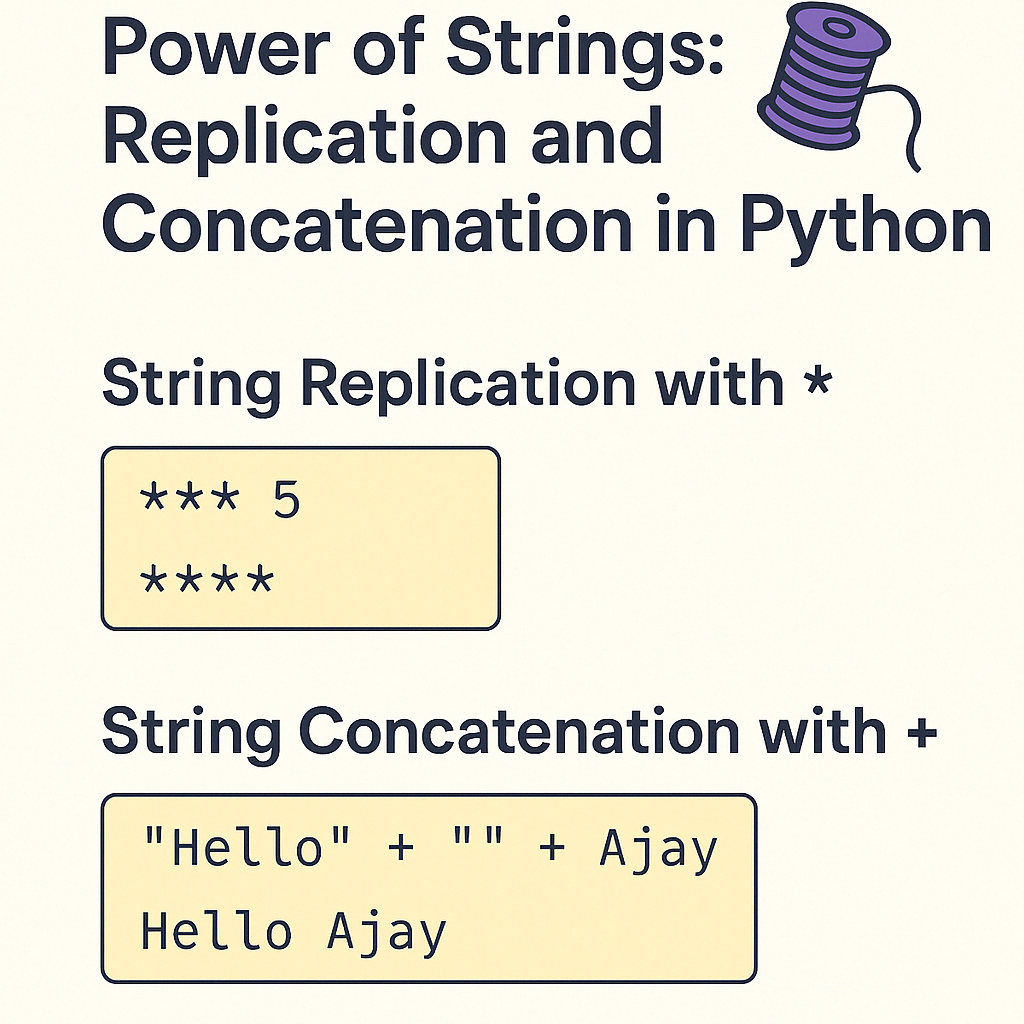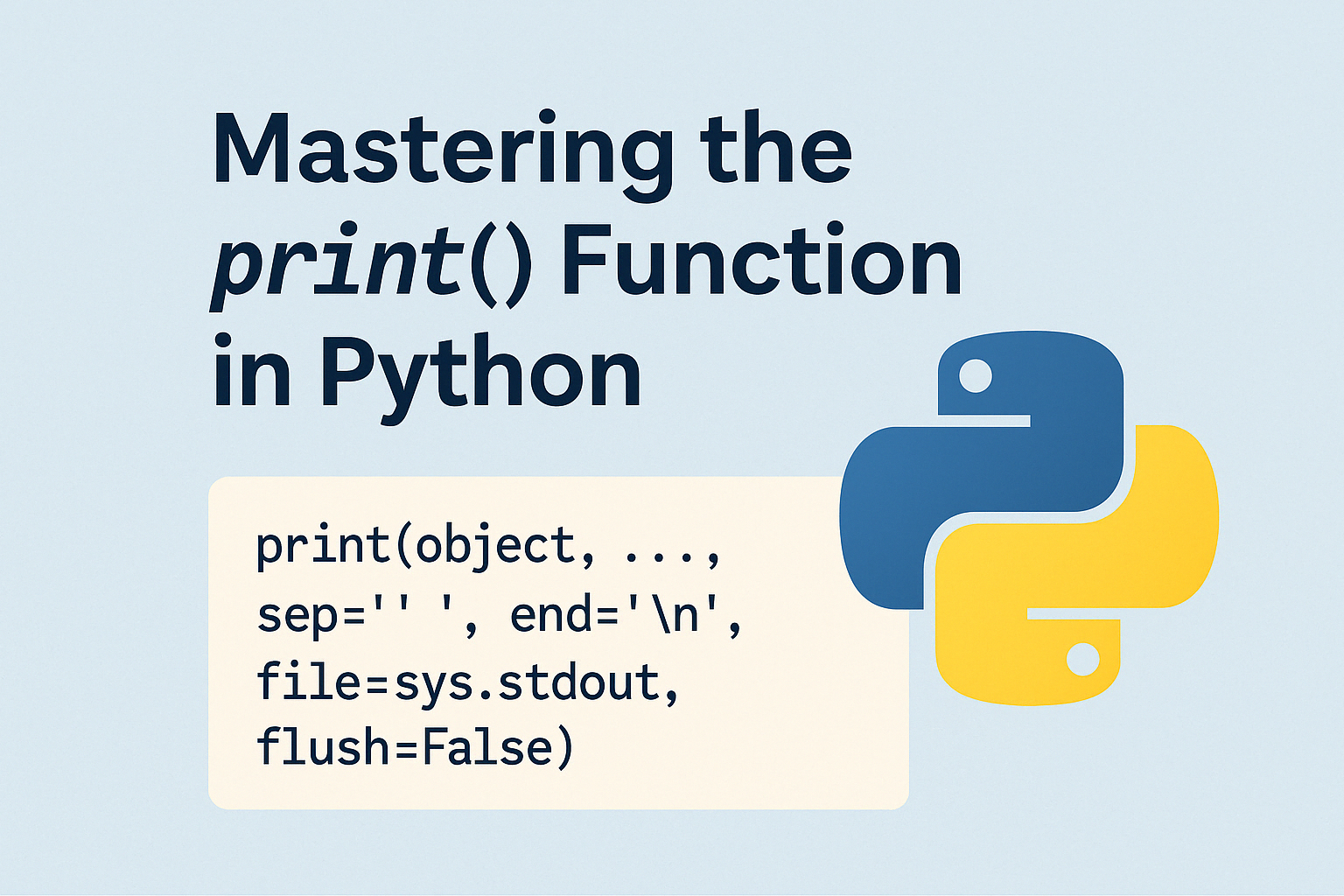When you’re just starting out with Python, you’ll often work with strings. Whether you’re displaying a message, building a pattern, or formatting output, knowing how to manipulate strings is a must.
Two essential tools that help you do this are the * and + operators. In this blog, you’ll learn what they do, how to use them, and where they shine—especially when creating patterns or playful outputs.
🔁 String Replication with *
In Python, the * operator can be used to repeat a string multiple times.
"string" * numberThis creates a new string that repeats the original one number times.
✅ Example 1: Repeat a symbol
print("*" * 5)Output:
*****This prints five asterisks in a row—very useful for patterns or separators.
✅ Example 2: Create a header or border
print("=" * 10)
print(" Python ")
print("=" * 10)Output:
==========
Python
==========✅ Example 3: Add spacing
print("Hello" + " " * 5 + "World")Output:
Hello World📌 Replicating spaces with " " * n is a handy trick for aligning text.
➕ String Concatenation with +
The + operator is used to join two or more strings together. This is known as string concatenation.
🧠 Syntax:
"string1" + "string2"The result is a new string where the contents are combined.
✅ Example 1: Join words
greeting = "Hello"
name = "Ajay"
print(greeting + " " + name)Output:
Hello Ajay✅ Example 2: Combine characters
print("C" + "O" + "D" + "E")Output:
CODE✅ Example 3: Add separators
print("P" + "-" + "Y" + "-" + "T" + "-" + "H" + "-" + "O" + "-" + "N")Output:
P-Y-T-H-O-N📌 You can add any symbol or character between values to create a visual structure.
Combine Replication with Concatenation
You can mix both operators for stylish outputs:
print("*" * 3 + " Python " + "*" * 3)Output:
*** Python ***This is especially useful for headings or pattern-like banners in your programs.
🎯 Summary Table
| Operator | Use | Example | Output |
|---|---|---|---|
* | Repeat a string | "@" * 4 | @@@@ |
+ | Join strings | "Hello" + "World" | HelloWorld |
+ + * | Stylish output or formatting | "="*5 + "Hi" + "="*5 | =====Hi===== |
✅ Conclusion
Understanding string replication and concatenation is like learning the alphabet of Python’s visual language. Whether you’re crafting headings, aligning outputs, or designing basic patterns—* and + give you the power to shape your text.
Next up, we’ll use these techniques with the print() function to generate cool patterns—without writing a single loop! 💥


